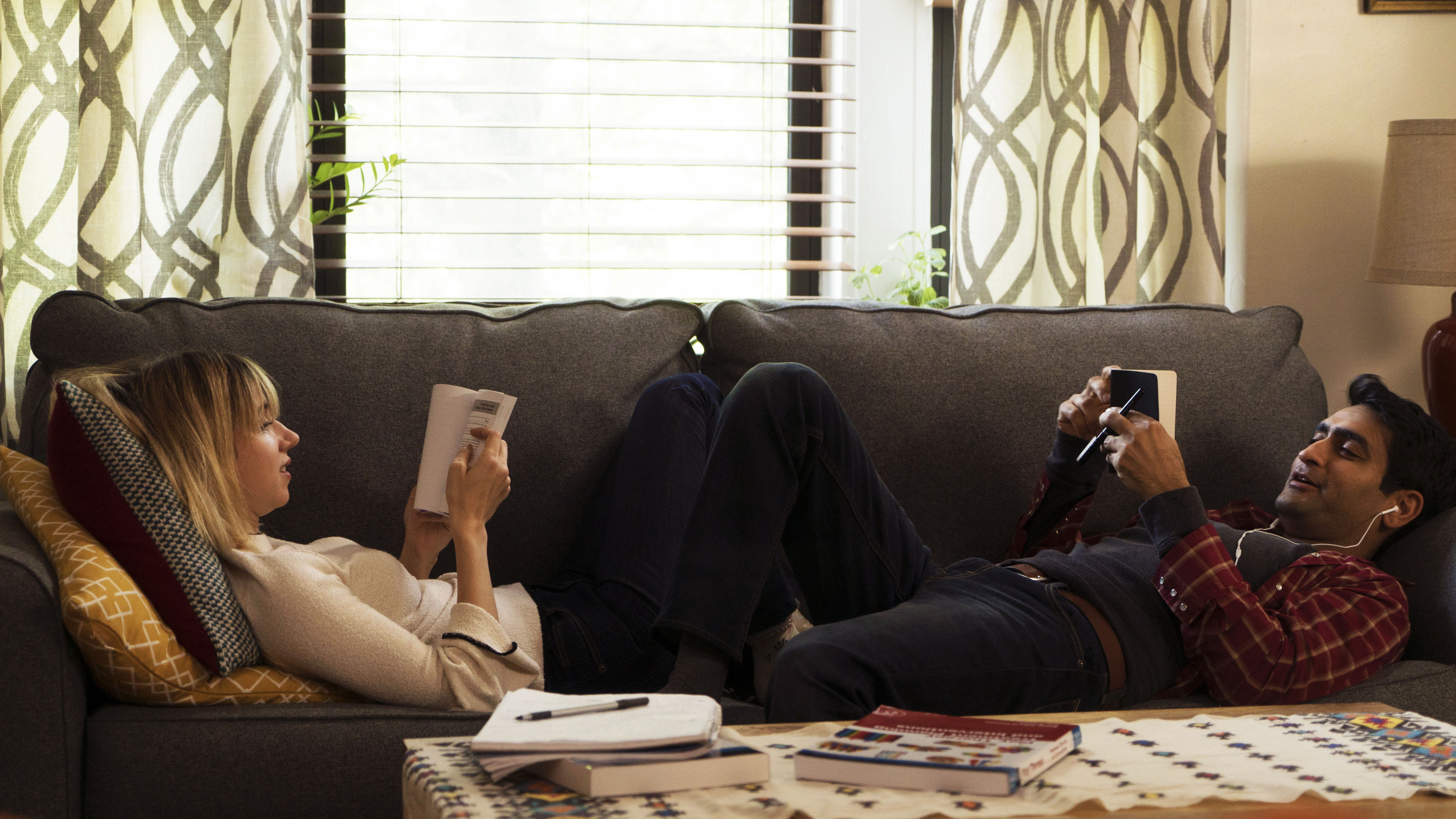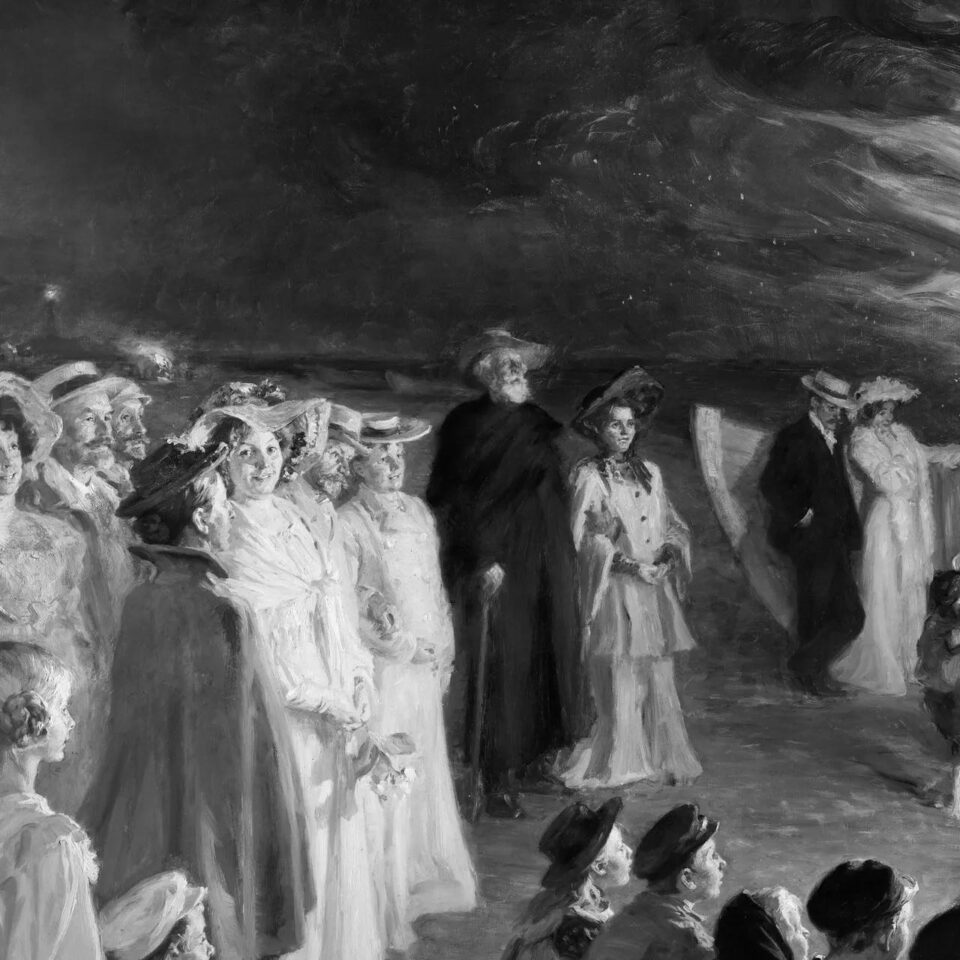Kumail Nanjiani’s family desperately wants him to marry a nice Pakistani woman. The woman that Kumail Nanjiani loves is in a medically-induced coma. And she’s white.
This is the basic premise for The Big Sick, the subtly, smartly funny film based on Nanjiani’s real-life experience meeting his wife, Emily V. Gordon, whose fictionalized character is named Emily Gardner and wonderfully played by Zoe Kazan. The couple co-wrote the film based on the beginnings of their own relationship, and most of the plot is true: Eight months after Nanjiani met Gordon, she became gravely ill.
While The Big Sick juggles two primary plotlines—Nanjiani’s struggle with his family’s expectations and Gardner’s scarily sudden illness—there is a constant undercurrent of anxiety. At times, we’re not sure if Gardner will pull through. We learn she has a severe infection, and it spreads from her lungs to her kidneys. And while the film is able to err on the lighter side by employing the characters’ witticisms—Nanjiani is hilarious, as are Emily’s parents, played by Ray Romano and Holly Hunter—it’s a reminder that chronic illness doesn’t discriminate by age.
Your twenties are supposed to be some of the best years of your life. We’re constantly bombarded by images of the glowing, ambitious, energetic young adults. Youth and vitality are prized in our culture. But what happens when you don’t fit the mold of the perfect young adult? What happens when chronic illness is your normal, just as it was for Emily Gordon?
Gordon is among the countless young adults who are coping with chronic illness. Despite the United States being among the leading countries for money spent on healthcare, today’s twenty to thirty-year-olds are faced with an onslaught of potential health issues. According to report for the Centers for Disease Control and Prevention, 86 percent of healthcare spending goes to managing chronic conditions, such as arthritis, lupus or diabetes. Furthermore, a study from the National Academies of Science, Engineering, and Medicine argues that Americans in general are unhealthier and at a higher risk of illness than people in countries with similar economic profiles—and these issues exist across age groups, not just among the elderly. When Taylor Blueher was eighteen, he was diagnosed with Crohn’s Disease. Crohn’s is an inflammatory condition that attacks the digestive tract. Now he’s twenty-eight and still finding ways to deal with the symptoms.
“For the past decade I’ve been going through a cycle of getting sick, hospital visits, surgeries, and putting my life on pause,” he says.
Crohn’s makes digesting food particularly painful. Blueher explained that inflamed intestines can have consequences for the rest of the body, giving literal meaning to “trust your gut”: If the gut is unhappy, it’s likely the rest of the body isn’t going to feel great either. Crohn’s can cause nausea and fatigue as well.
Blueher points out the pressure he feels for young people like him to exude health.
“You want to look and seem normal,” he says. “There is a lot of faking it that goes on, [which is] almost expected in our culture. It’s too bad that it’s such a negative thing to be open about how you actually feel. Culturally, we are all supposed to be these individuals, but we were designed to lean on faith and on each other in times of need.”
Kat Sinclair feels similarly—young people with chronic illness, despite being a growing segment of our population, are often overlooked or treated with a level of insensitivity. Sinclair was hospitalized during the summer of 2016 for IgA vasculitis, a rare condition that causes the body’s capillaries to swell. It often causes nausea, inflammation, and loss of appetite, and in some cases can lead to serious kidney problems.
“Culturally, we are all supposed to be these individuals, but we were designed to lean on faith and on each other in times of need.”
“Most people automatically equate youth and health,” says Sinclair. “An example from the small end of the spectrum: While I was in the hospital I had lost a bit of weight very quickly and my body felt incredibly weak. When the night nurse came to take my weight and vitals, she commented that she wished she dropped pounds in the same manner. Surely she wasn’t thinking about how ill I was.”
While this particular individual might not have understood the severity of Sinclair’s condition, it also revealed an assumption that Sinclair wasn’t actually severely ill.
From the outside, it can be hard to understand what a chronically ill person is experiencing. In The Big Sick, Nanjiani reacts to Gardner’s comatose state with a stand-up skit that veers into a panicked monologue. For both the chronically ill person and the people who love them, it can be an isolating experience.
“I still swiped around on Tinder from my bed,” Sinclair says. “I found myself unable to commit to plans because I wasn’t healthy enough to follow through. How much should you tell a stranger on a date? I couldn’t drink or eat food that was a normal consistency and I didn’t want to explain this over and over every time I went out with someone new.”
“It has taken me a really long time to be vulnerable about it,” Blueher adds. “You want to be able to keep up with someone you are dating or in a relationship with, and the reality is, more often than not, you can’t. That eventually puts some stress on you and your partner in one way or another.”
The Big Sick should be appreciated for its unconventional portrayal of love. Unlike many rom-coms that end with a picturesque white wedding, a loving embrace, or whatever trope we have all seen a million times, it ends with Emily knowing that she is going to have to cope with this condition for the years to come, a realization Blueher and Sinclair share. But it also ends with her knowing that she can pursue her career aspirations and find love alongside her peers who aren’t dealing with chronic illness.
“I think it’s gonna take a little bit of time for society to shift,” Blueher says. “It’s really sad to see so many young people getting sick. That being said, I think there is a really amazing opportunity at our feet. We have been dealt a shitty hand, but it’s up to us what we are going to do with it.”
The Big Sick is, at its core, a reality check: We aren’t all reflections of what society says we should be. The film also emphasizes that that is OK—chronically ill folks can still have fulfilling lives and find love. With chronic illness unfortunately becoming more normalized, it is important we have avenues to explore how it affects our self-image, love lives, and our future as a society. The Big Sick is a courageous step away from the stigmas of chronic illness, and toward progress and acceptance. FL









